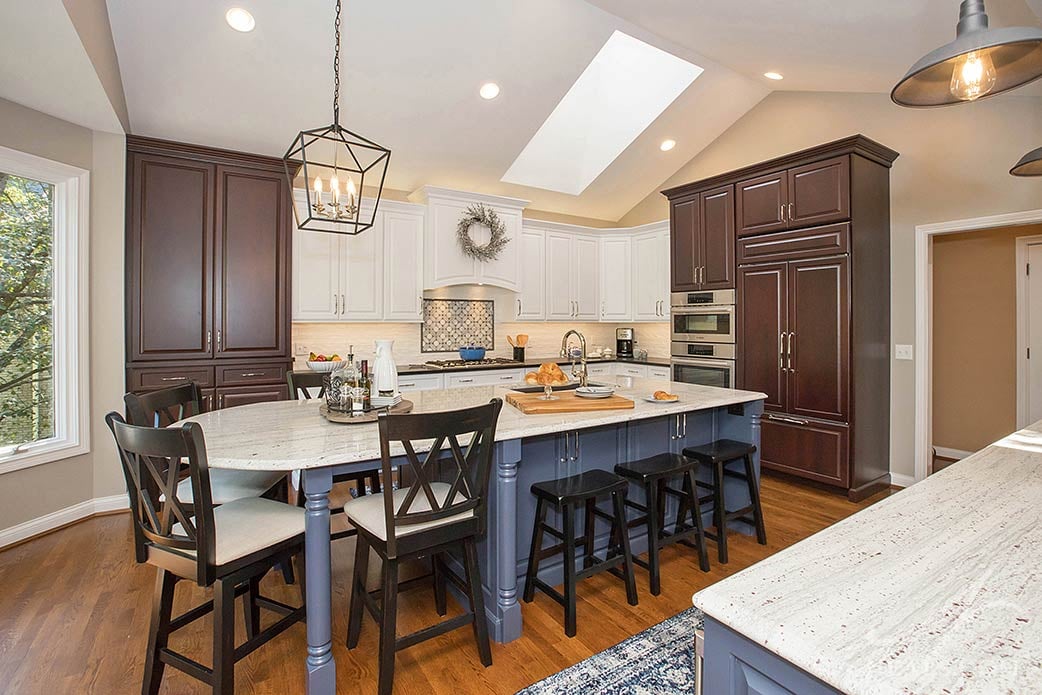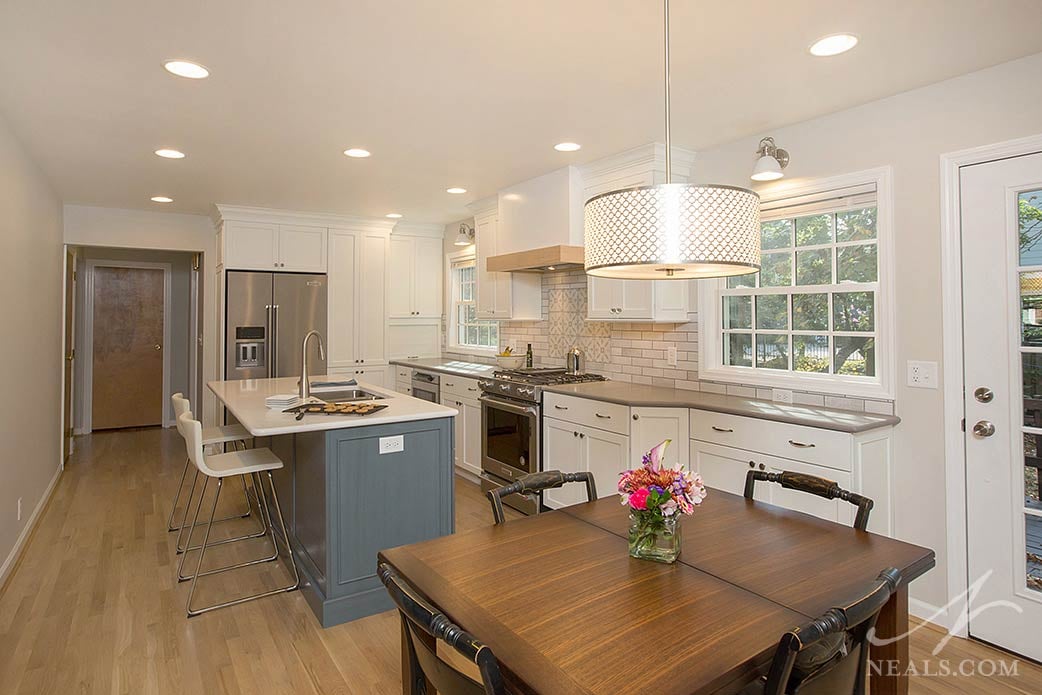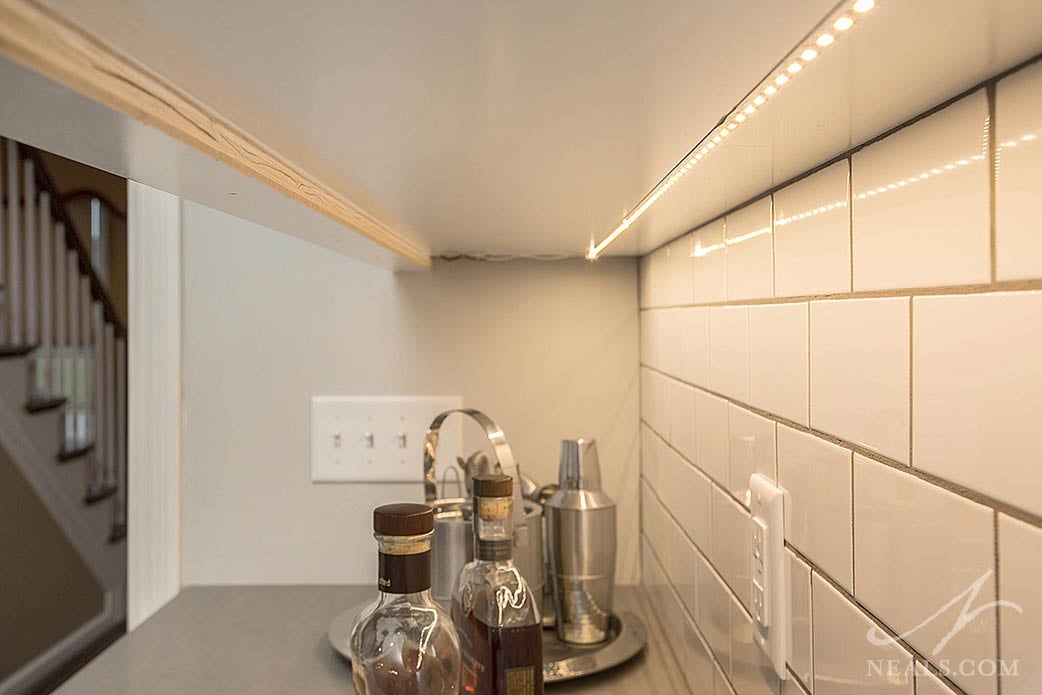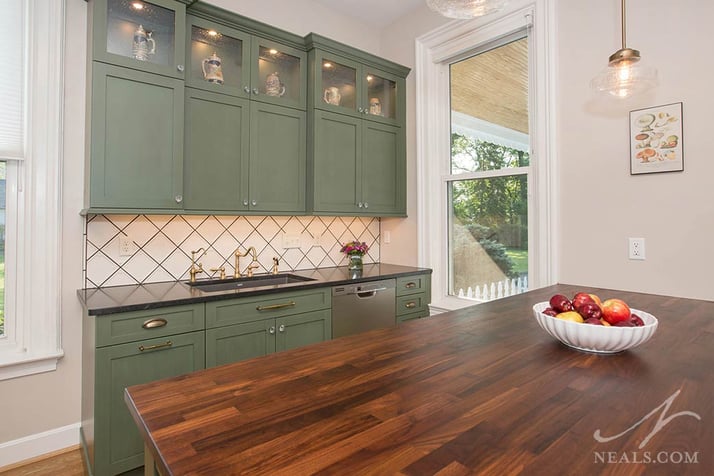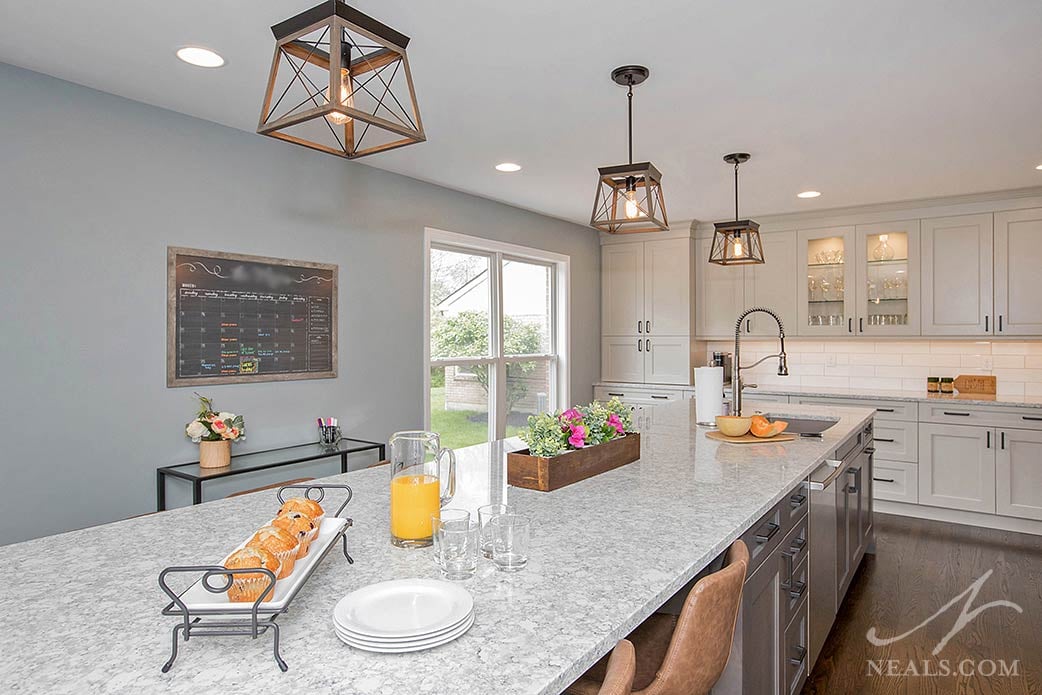Proper illumination is important in a kitchen to enable you to work efficiently and safely when you are cooking, eating or entertaining. Kitchen lighting should be planned by design. To create versatile lighting in the kitchen, it's important to include more than one type of fixture. Different types of lighting allows you to layer light in different configurations depending on your needs. For example, soft warm light from a pendant is great for the morning before coffee, while focused white task lights over the sink are ideal for when it's time to do the dishes. Luckily there are six types of light fixtures that can be mixed and matched in the kitchen to provide plenty of options for all your needs.
When you think of lighting in a kitchen consider illumination during both daylight and evening hours. Many kitchens have at least one window to provide a source of natural light during the daytime. If the kitchen is centrally located without an exterior wall, natural light may be achieved with a skylight, large windows on the nearest wall, or it may require artificial lighting throughout the day. In general, it's best to include natural lighting as much as possible in addition to any of the other lighting options below.
1. General Lighting
General lighting in today’s kitchens is installed on a ceiling typically in the form of recessed can lights. This type of fixture can be installed in carefully chosen locations to provide a fairly uniform level of light in the entire kitchen. They can also be set up on a set of switches that allow some to be on and others to be off to further refine the lighting. Recessed can lighting is great for general lighting because it is installed flush to the ceiling so that they don't draw attention to themselves.
2. Task Lighting
Task lighting illuminates the work areas of a kitchen more specifically. The key task areas of a kitchen to factor into your lighting plans are over:
- the sink
- counters used for food prep
- an island or peninsula
- corners where small appliances may be used
- cooktop or range
Task lighting can be provided by strategic placement of a variety of light fixtures depending on where the work area is located. For instance, a recessed light works well over the sink, while a pendant fixture may be better over a peninsula. Regardless of the exact fixture that's used, the goal with task lighting is to provide ample and direct light on a specific area so that you can work there safely and see what you need to.
3. Undercabinet Lighting
Undercabinet lights are functional and add an attractive feature to the kitchen. Undercabinet lighting comes in three types: strip or rope lights, puck lights, and linear lights. While puck linear lights can function as task lighting, strip lights provide a steady wash of light along the entire length of the cabinets. Fixtures come in an range of sizes to fit under a variety of cabinets and configurations.
When selecting undercabinet lights, it’s important to consider the reflective nature of your counter surface to be aware of glare that can occur when the light shines down on the surface. A frosted lens can be used to minimize glare and puck lights should not be used over dark glossy surfaces. LED lights work best over dulled surfaces such as honed granite or concrete.
4. Interior Cabinet Lighting
Lighting the inside of a cabinet is a great option to add useful and stylish lighting. There are two ways this can be accomplished. The first is to install lighting into the cabinet, such as a puck light. The second is to install cabinets with integrated lighting, which is built into the cabinet already. In either case, interior cabinet lighting is most often used with glass-front cabinet doors, but it can also be used in any cabinet or drawer that you may otherwise have a difficult time seeing into.
5. Accent Lighting
Accent lighting can be used in a kitchen to highlight architectural features and items that you want to display. Uplights can be used on the tops of cabinets or adjustable spotlights can be used to show the contents of an open cabinet or shelf. Lights can also be placed over artwork. Lighting can be installed in the recesses of a tray ceiling to create a canopy of light that is great for parties. Since accent lights are used primarily for ambiance and display it is best to have them installed with a dimmer switch.
6. Pendants and Chandeliers
Pendants and chandeliers are the jewels of a kitchen and can be key elements to the kitchen's style. Hanging fixtures can be installed over islands and peninsulas in a variety of configurations. They are often installed in pairs or groups of 3-4 to cover the length of the counter, depending on their size. The fixture can either be a downlight that will shine directly on a surface or an uplight that radiates light toward the ceiling. Chandeliers or other types of large decorative fixtures also provide ambient and general lighting. It's important to size the fixture correctly for your kitchen so that it doesn't overwhelm the space or look too dainty, and that it provides the level of light you want.
NOTE: This post was originally published Oct. 29, 2013. It was last updated Sept. 8, 2020 with new images and text edits for clarity.
